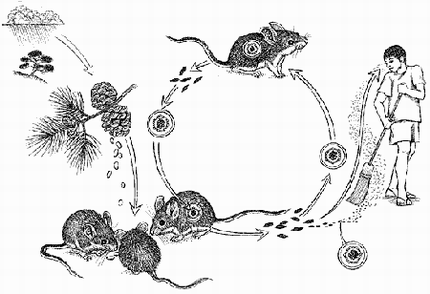Hantavirus is carried by certain species of rats and mice and the illness is rare. Infected rodents shed the virus in their urine, droppings and saliva. The virus can be transmitted to people when infected rat or mouse urine, saliva, droppings or nesting materials are stirred up, temporarily aerosolizing the virus, which can be breathed in by humans.
People who live in rural or suburban areas near undeveloped land are at higher risk from mice entering their homes. People most commonly become infected when they stir up and inhale airborne particles of contaminated rodent droppings, urine and saliva. The virus can also be spread by touching the mouth and nose after handling infected rodents or contaminated objects.
To reduce the risk of hantavirus infection, do not vacuum, sweep or dust areas for 30 minutes after opening doors and windows. When cleaning rooms or buildings, wet the surfaces with disinfectant (for example, a 10 percent bleach solution) before cleaning.
Hantavirus pulmonary syndrome is caused by a virus carried by wild rodents, primarily deer mice. The 1st signs of illness in humans are similar to flu symptoms and include fatigue, fever and muscle aches. They can also include headache, dizziness, chills, nausea, vomiting, diarrhea and abdominal pain.
Later symptoms of hantavirus pulmonary syndrome include coughing, shortness of breath rapidly progressing to severe difficulty in breathing, and sometimes death. It is essential to seek medical treatment. There is no specific treatment, so prevention is important.
